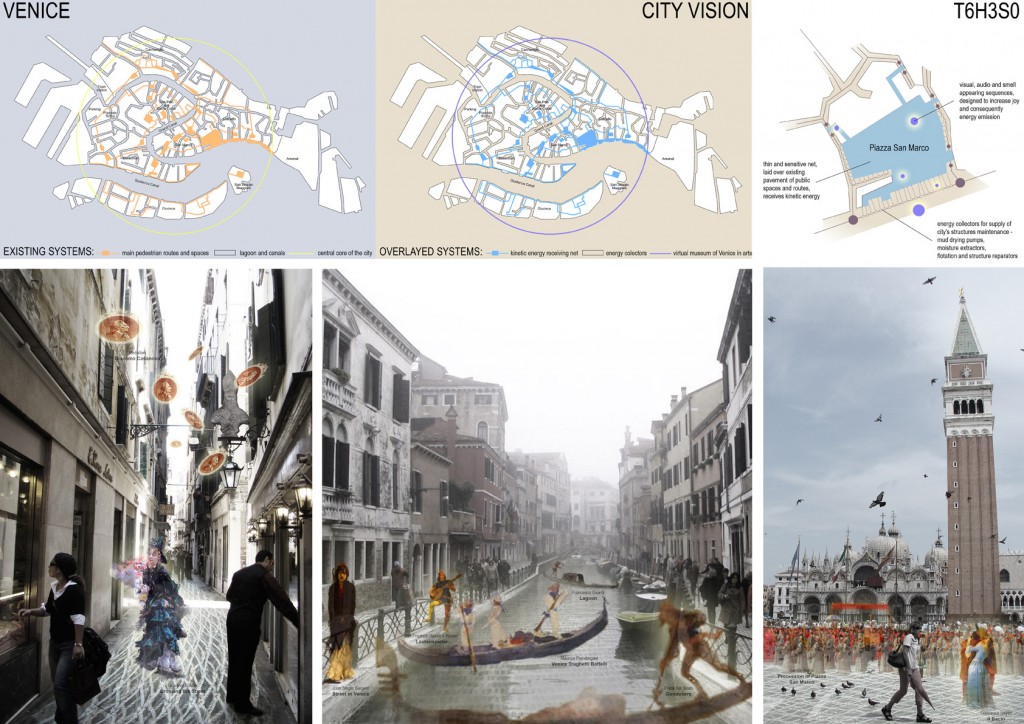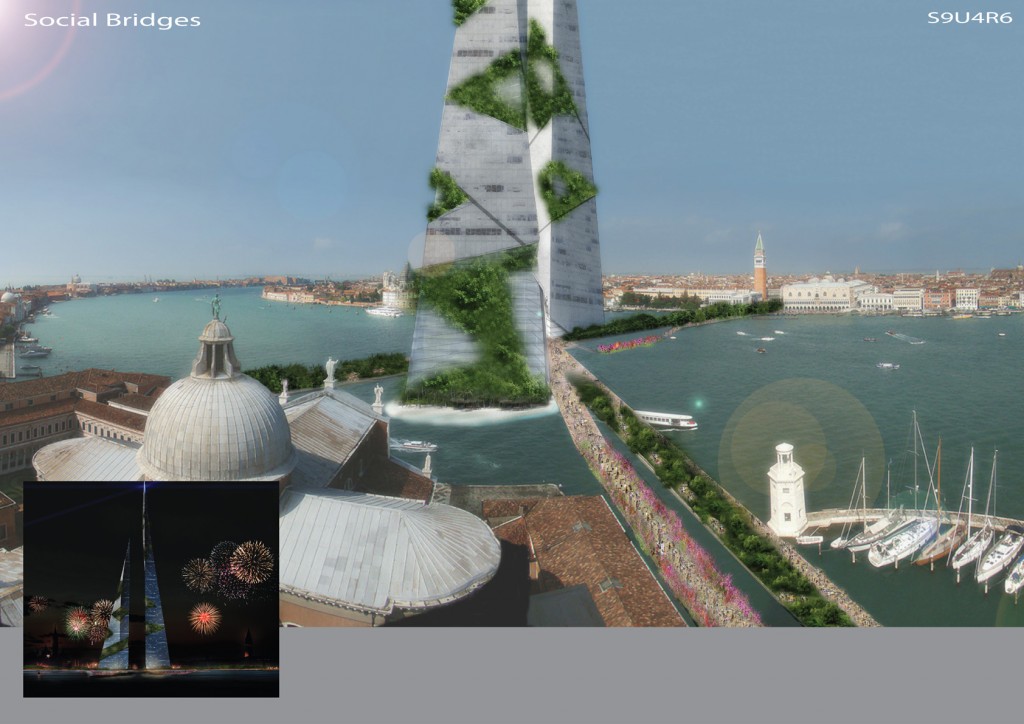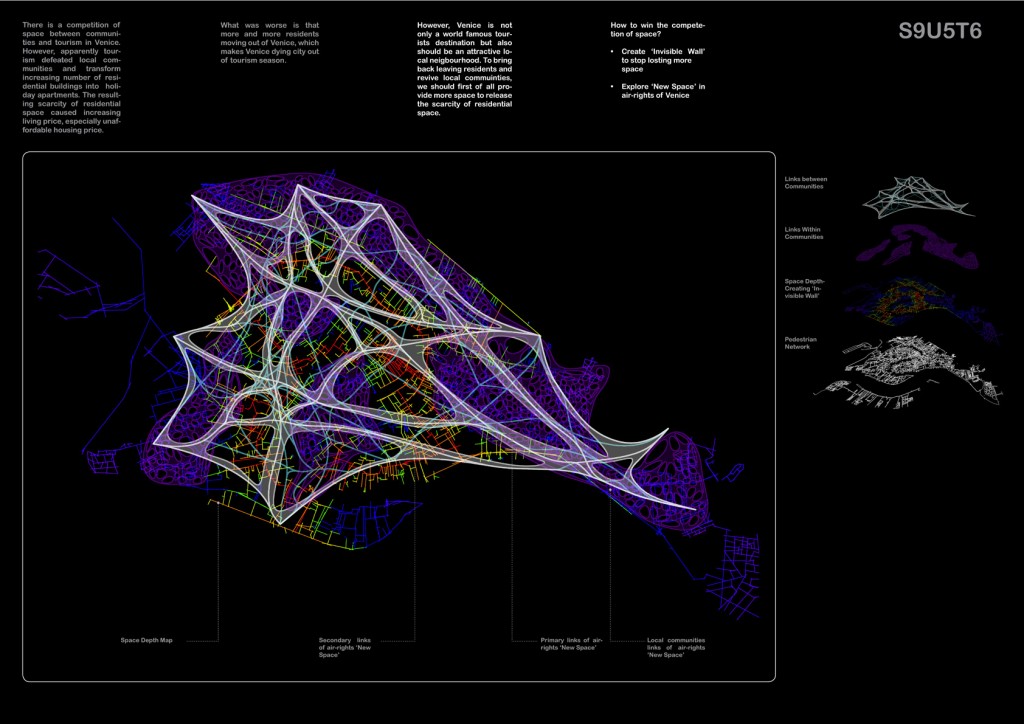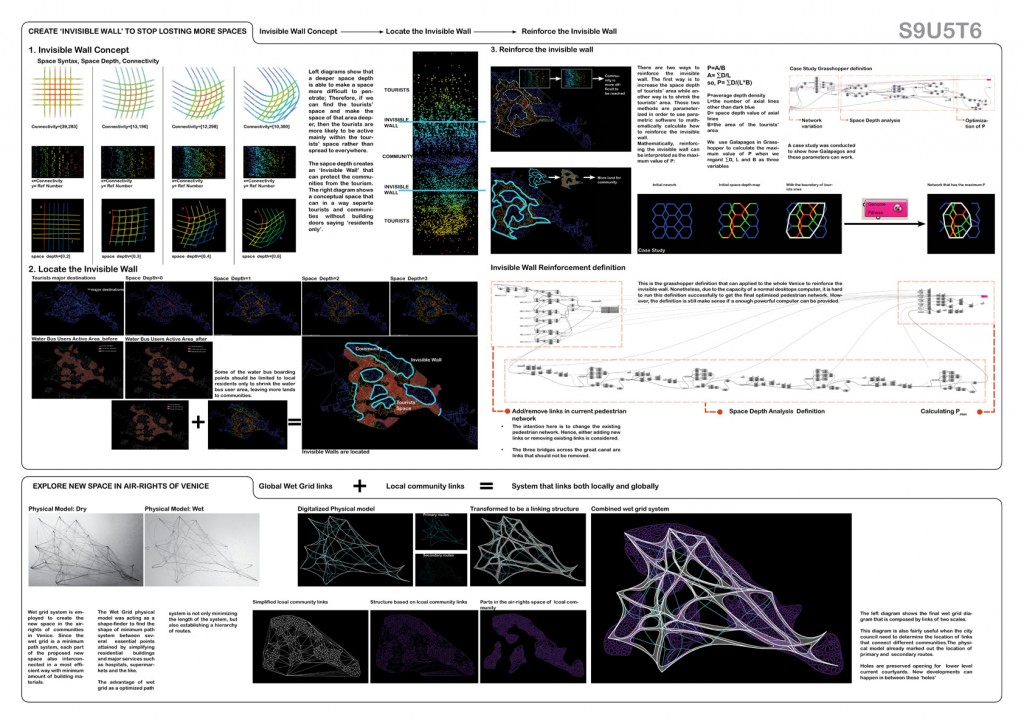Info:
Title: Revive Venice’s Communities - Code: S9U5T6Contest: Venice / 2011
By: Z. Hua Qiu
Views: 2683 Likes: 0
Votes:
BJARKE INGELS6 NERI OXMAN8 ELENA MANFERDINI4 MARIA LUDOVICA TRAMONTIN3 BOSTJAN VUGA75.6
Revive Venice’s Communities
Venice has three levels above water: low, middle, upper. At low level (ground level), competition for space between tourism and local communities is extremely intense. Tourist are everywhere at the low level. Whereas on the upper level (roof top level), apart from various holiday buildings, all else are the local community residential space. The existence of the middle level maintains the independency of the upper level from the lower. According to this, one strategy for winning back community space in the future is to constrain the sprawl of tourism to the lower level while exploring new ways to use spaces on the upper level for community purposes. Based on this analysis, we developed the concepts of ‘Invisible Wall’ and ‘New community space linked by wet grid’.
The ‘Invisible Wall’ actually already exists in Venice. For an ordinary tourist, the illegible pedestrian network in Venice can be seen as a simplified reflection of the ‘Invisible Wall’. Nonetheless, the significance of this design lies in revealing the existing ‘Invisible Wall’ and then to further reinforce it by manipulating existing pedestrian networks using parametric calculation. In terms of implementation, parametric software will determine the best locations based on local constrains. Thus changes to the local urban fabric are minimized yet achieving a maximum result. Knowing the best locations to insert new developments, we can build arcades to add new links or occupy existing pedestrian routes with new developments to block links that need to be cancelled. What is more exciting is that the transformations are subtle enough to protect community from tourism without actually being noticed. The result is less space occupied by tourism and more available residential space for communities.
‘New community space linked by wet grid’ is another way to reclaim community space. This proposal aims to provide affordable living within communities in response to the current high housing prices. Wet grid as a ‘minimum path system’ will provide the links inside these ‘New Spaces’. There are two advantages of this system. First of all, it can dramatically decrease the length of the entire network as well as the use of building materials whilst maintaining a high level of connectivity among nodes in the system. Secondly, it is not demanding in terms of space, saving space for future developments. What is worth noting is that the wet grid not only links different communities together but it also links communities with existing hospitals, supermarkets, other residential services and job opportunities to provide affordable living to local residents. Another thing to note is that the ‘New Space’ is not exclusive to tourist. At the access points of these ‘New Spaces’ on ground level, tourists are allowed to access the ‘New Space’ and consume within a specific area that should be carefully designed to hide the limitations. Through these measures, the ‘New Space’ will be a space of affordable living for local residents. Meanwhile, the relationship between tourism and communities is not antagonistic, but mutually beneficial.
Info:
Title: Revive Venice’s Communities
Time: 6 giugno 2011
Category: Venice
Views: 2683 Likes: 0
Tags: Colonization , Essays and Manifestos , Grid plan , Hua Qiu , Pedestrian , Space , Technology , Tourism , Venice









